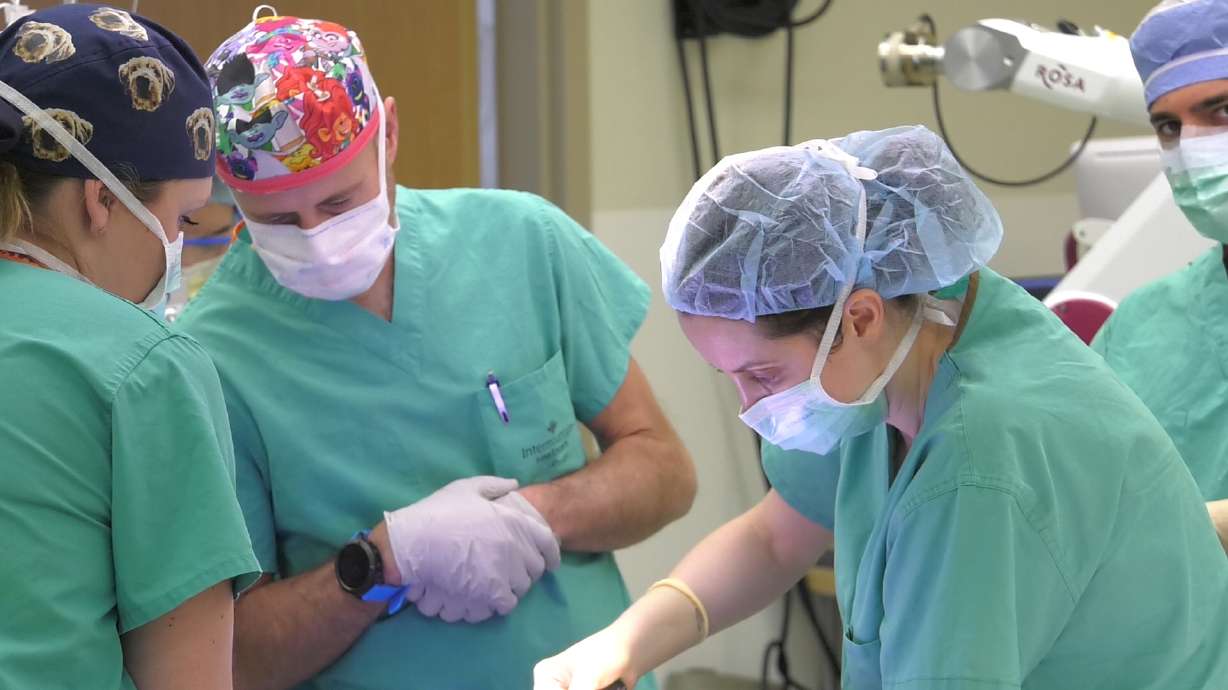Estimated read time: 3-4 minutes
This archived news story is available only for your personal, non-commercial use. Information in the story may be outdated or superseded by additional information. Reading or replaying the story in its archived form does not constitute a republication of the story.
SALT LAKE CITY — Olivia Jones was having an increasing number of headaches, some of them quite severe. It wasn't until doctors were able to quickly remove a tumor at her brain stem that the 11-year-old found relief.
The Idaho Falls girl was treated using new technology that allows intraoperative magnetic resonance imaging during surgery. Dr. Samuel Cheshier, a pediatric neurosurgeon at Primary Children's Hospital and University of Utah Health, said that without it, Olivia's surgery would've lasted longer and spanned two days.
"This is a huge advantage for a neurosurgeon, because it helps us understand the anatomy of the brain in real-time," he said. "The pathologies in the brain exist next to structures which we don't want to touch at all. And as we deal with the pathology, the anatomy changes, because the brain shifts around because the mass is no longer there, so being able to update our anatomy and our image by having the MRI directly in the operating room, greatly assists us in increasing the safety of the operation and the success of the operation."
Olivia's mom, Heidi Jones, said that sporadic headaches began popping up through the last few months, but that they were really intense and occurring every day in the weeks before surgery. After Olivia starting getting dizzy and throwing up, her mom took her to the emergency room in Idaho Falls, where she was put on a emergency medical helicopter flight to Primary Children's after getting an MRI and CT scan that revealed the mass.
"It's frightening to get a diagnosis like that," Jones said. "Especially where you don't think that something that drastic is going to, you know, be wrong. But we're so thankful that every technology that they have available was able to be used to treat her in that moment."
Olivia is doing really well. Her mom said that she is more energetic, doesn't complain about headaches and is back to herself.
Cheshier explained that Olivia's tumor looked very similar to brain tissue but shows up as a different color on an MRI. Near the end of the surgery, he thought he had taken all of the tumor out, but he hadn't. An MRI scan was able to show him exactly where the remaining tumor was, factoring in movement of the brain during surgery.
Dr. Robert Bollo, another neurologist at Primary Children's, also uses the intraoperative MRI when he helps pediatric patients who are suffering from seizures. He said about one-third of patients are not able to treat their seizures with medicine and require surgery to address the issue.
After putting probes into patients' brains to identify the source of seizures, he uses robotic technology and laser ablation to stop the seizures. With the help of the new intraoperative MRI machine, Bollo said he can make a small incision and see updates to the surgery in real-time. Patients are typically able to be released from the hospital the very next day, instead of a longer stay or need to be kept in an intensive care unit with previous methods.
Performing surgery in a room with an MRI machine does mean that they have to use specialized equipment and take extra precautions to make sure everything is safe.
Bollo said he and others at the Intermountain region's only children's hospital are committed to helping as many children be seizure-free as possible, and doing the surgeries as minimally invasive as possible, too.
"It's already changed the way we do things in our practice. If we have technology we can use in the operating room … we're gonna do that," Bollo said. "This just represents a commitment by our team in the hospital to use whatever tool is available, whatever high-technology tool we can, to help kids."
He said this machine is not something they are using occasionally, but they are using it all the time, whenever they think it could play a beneficial role in a surgery.









